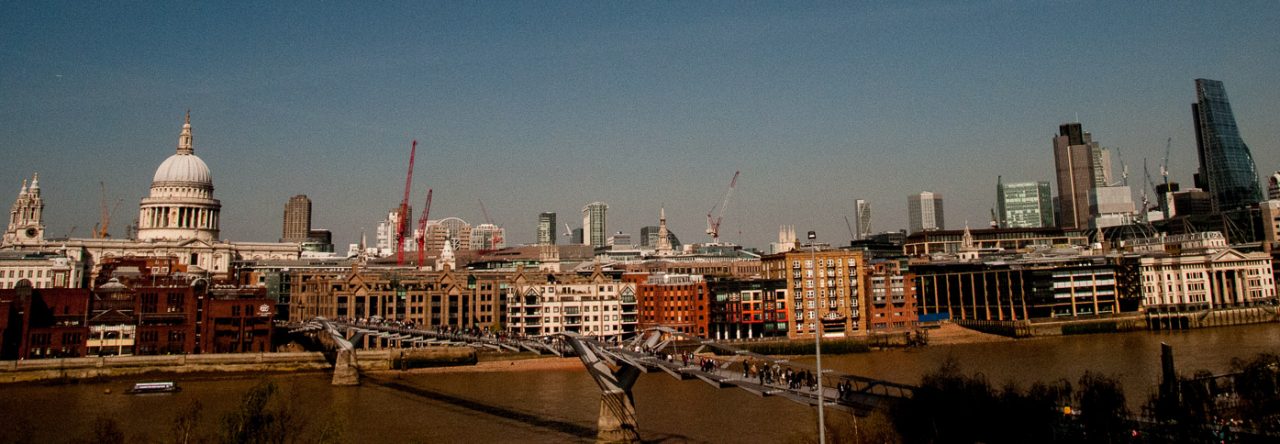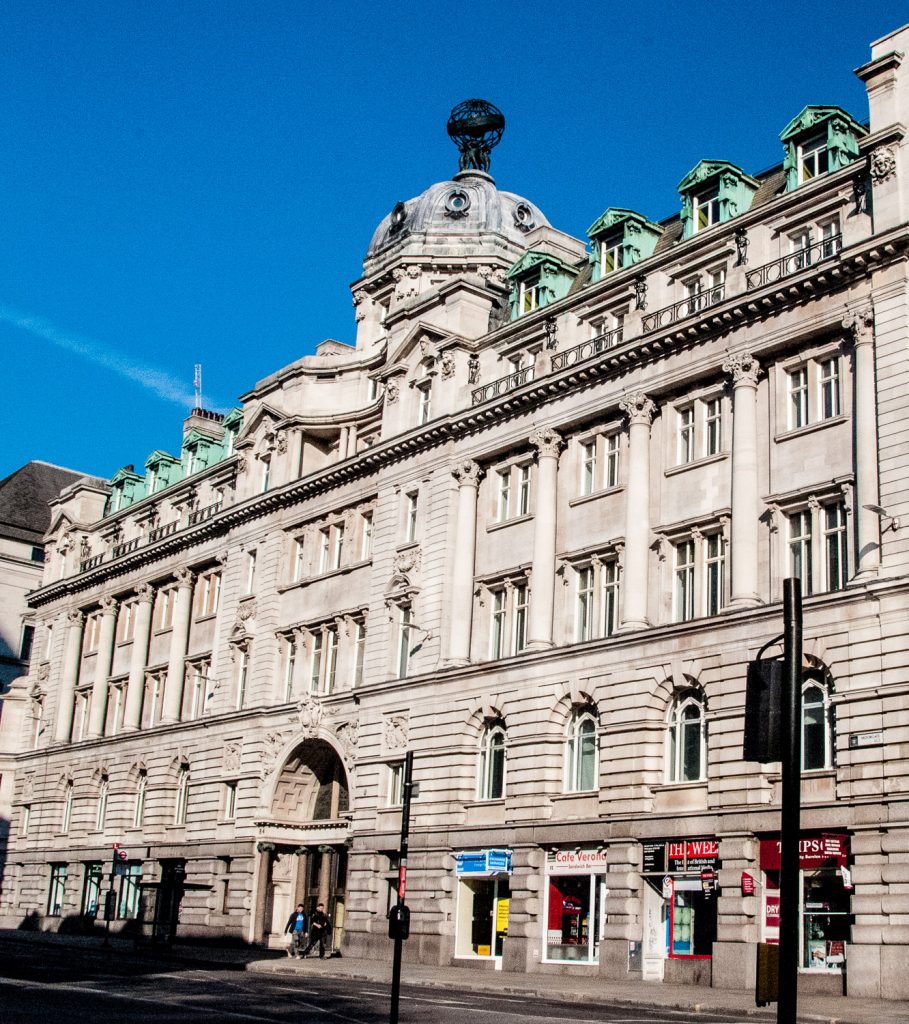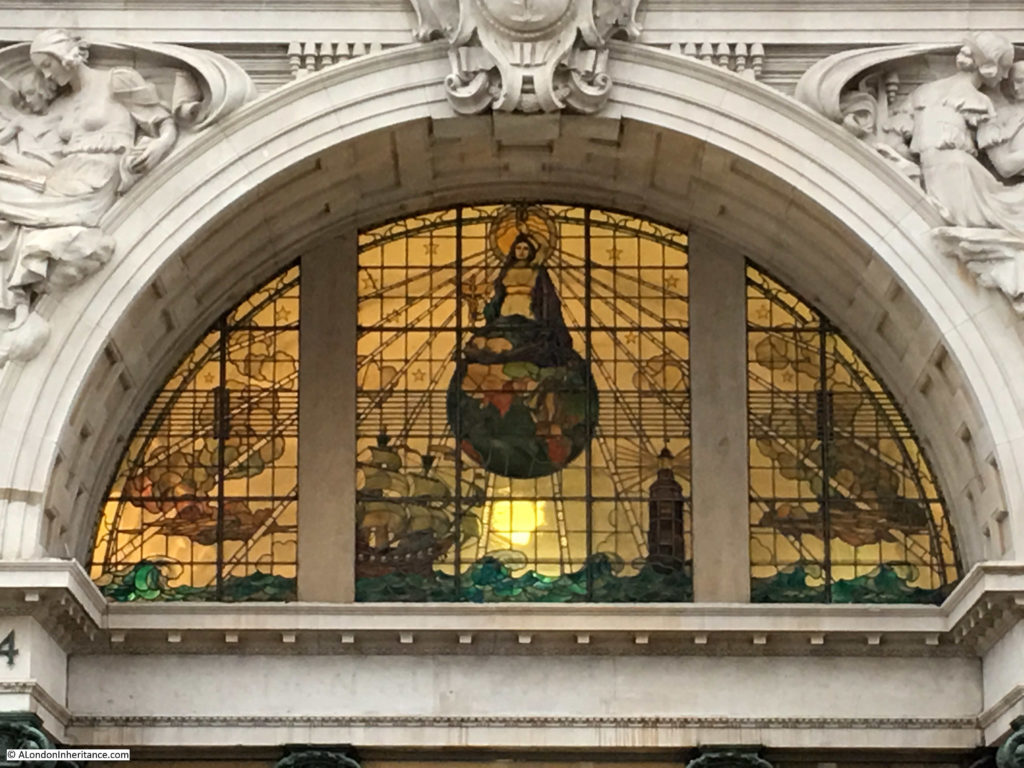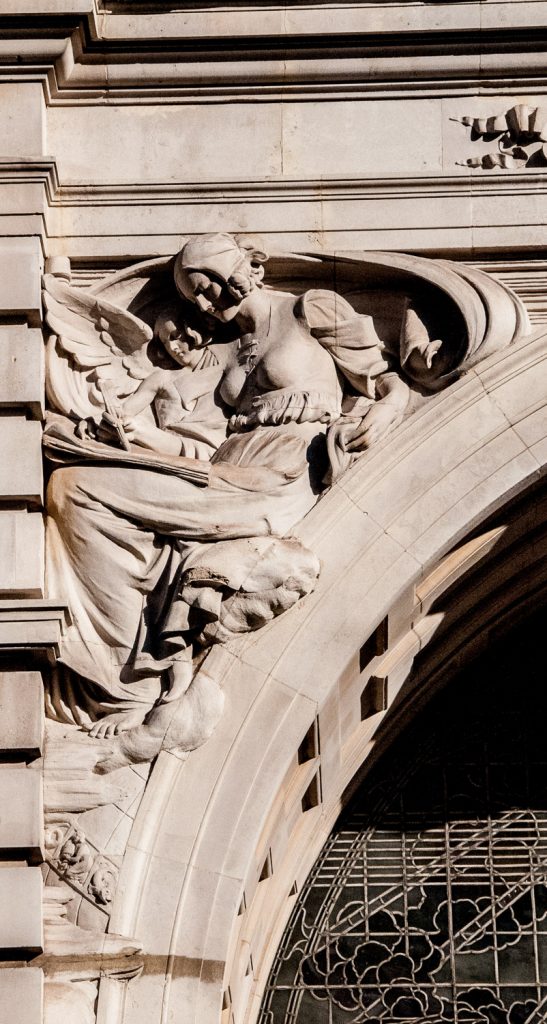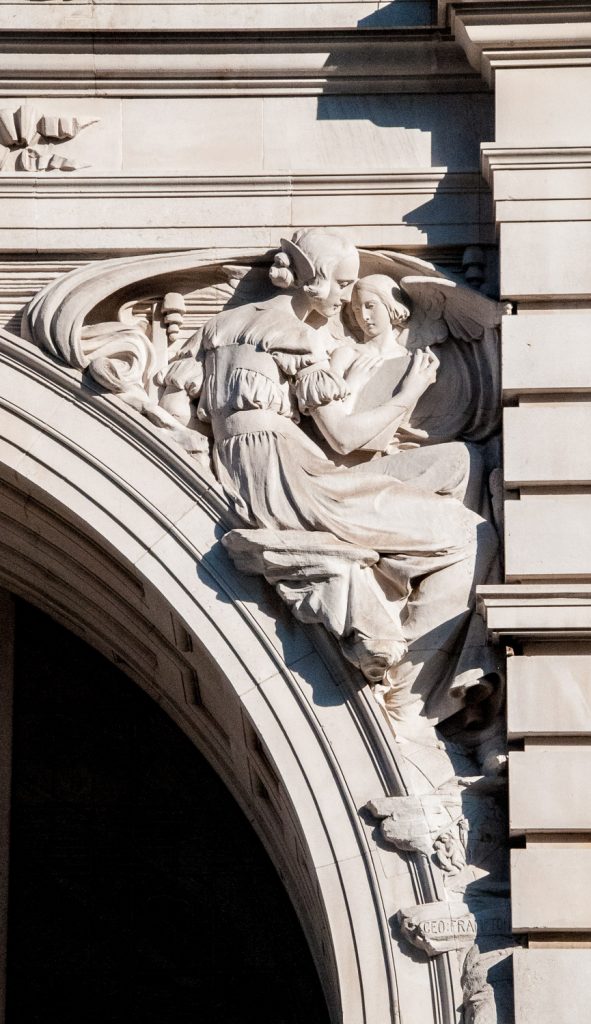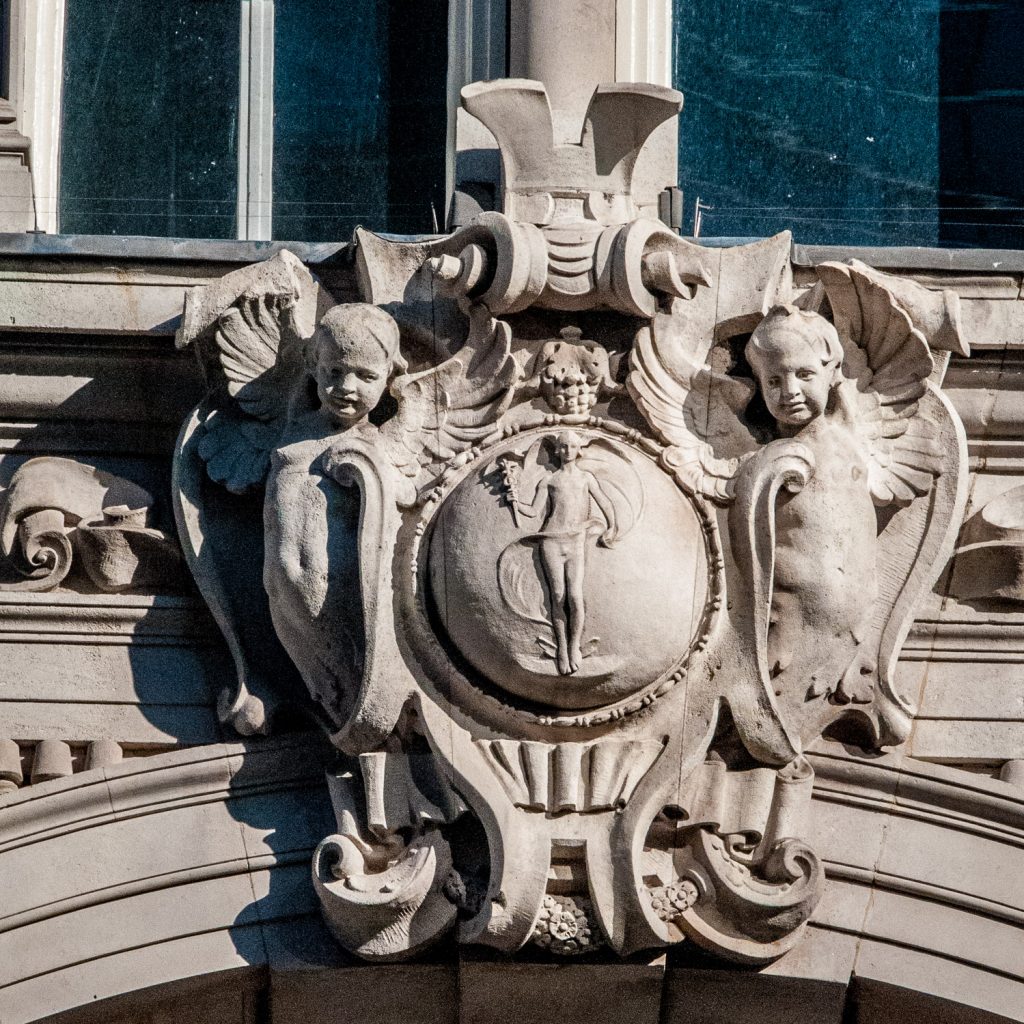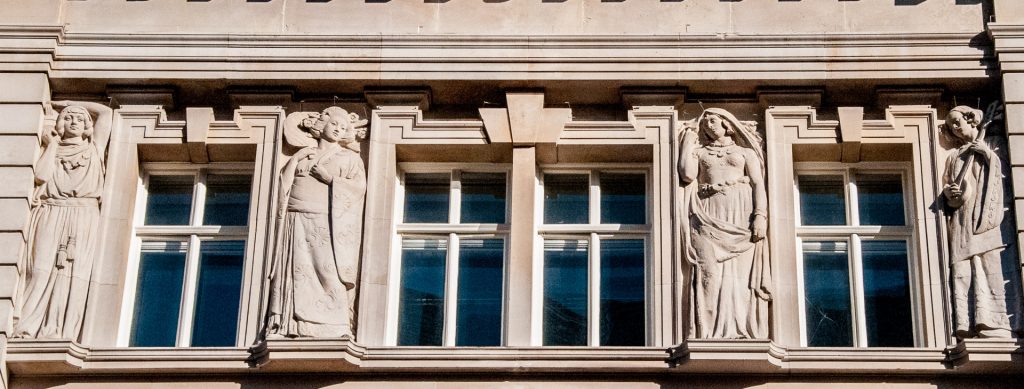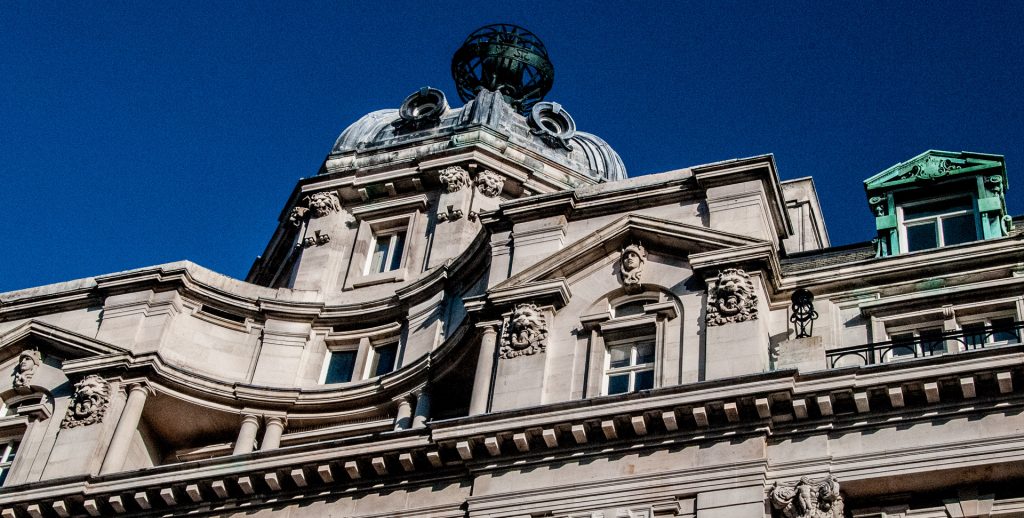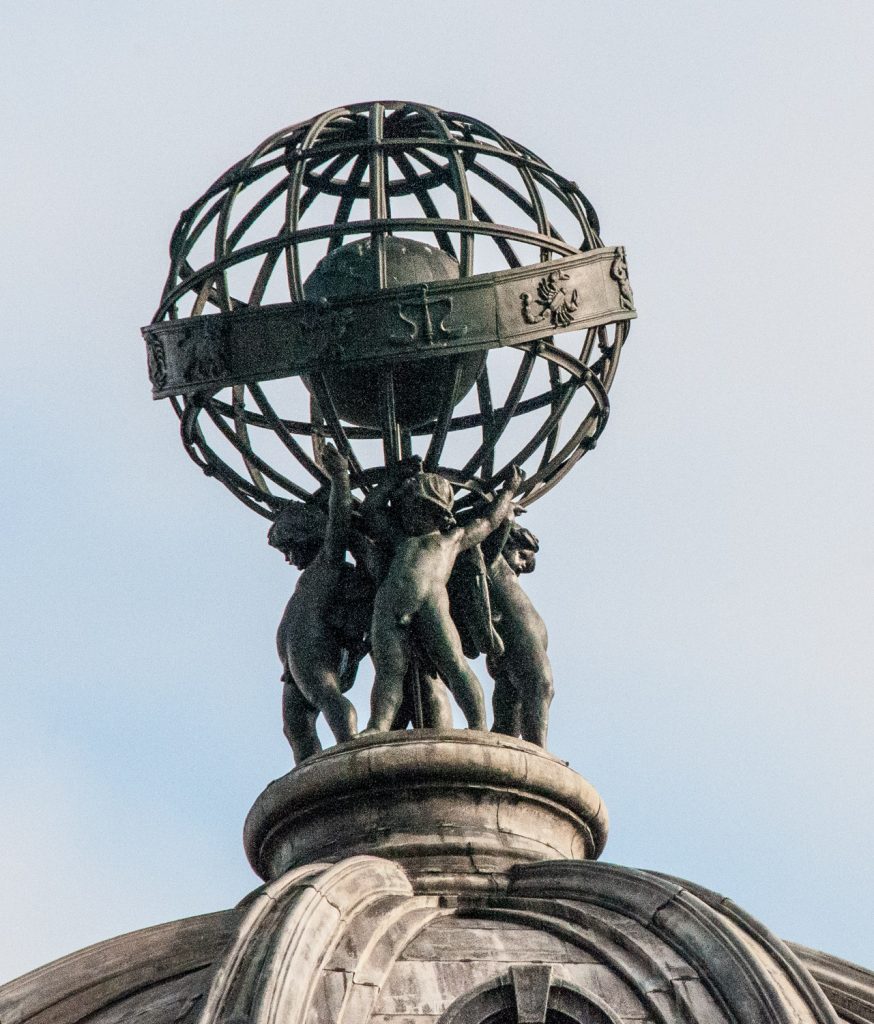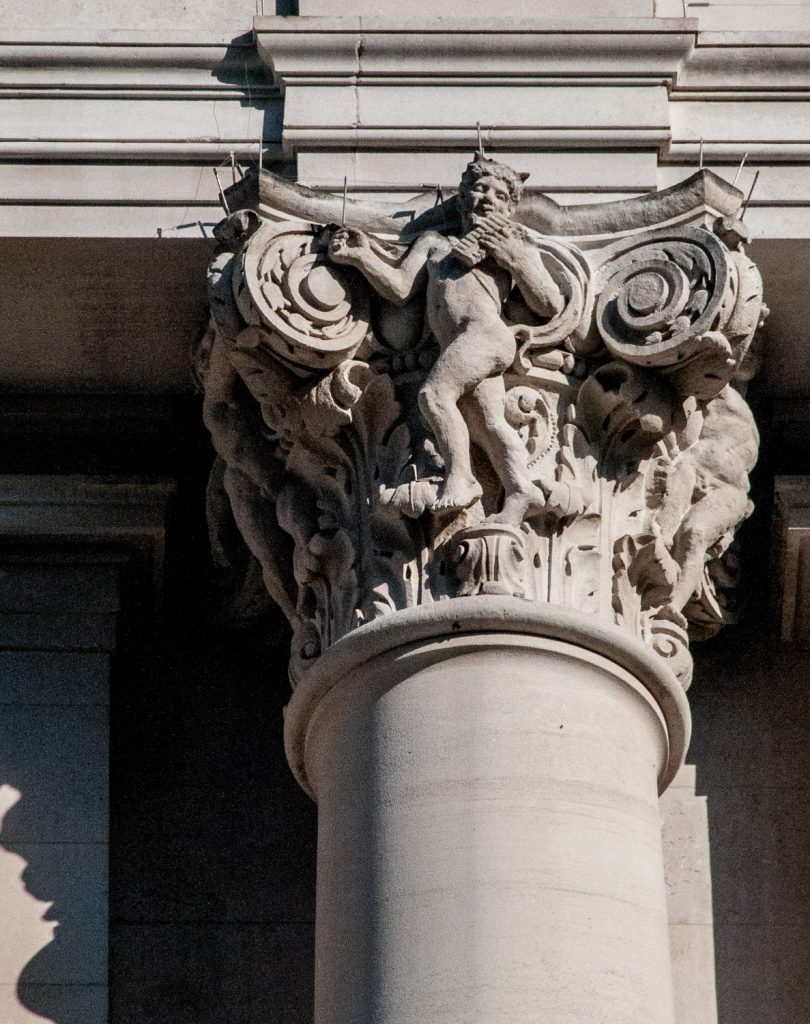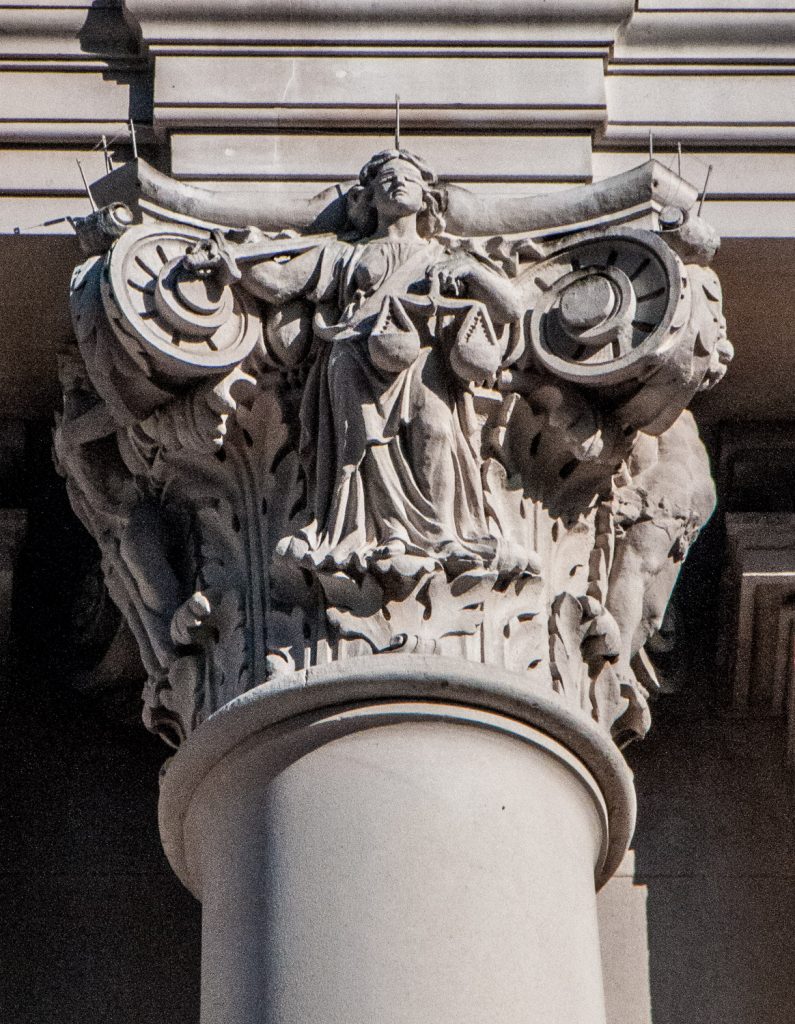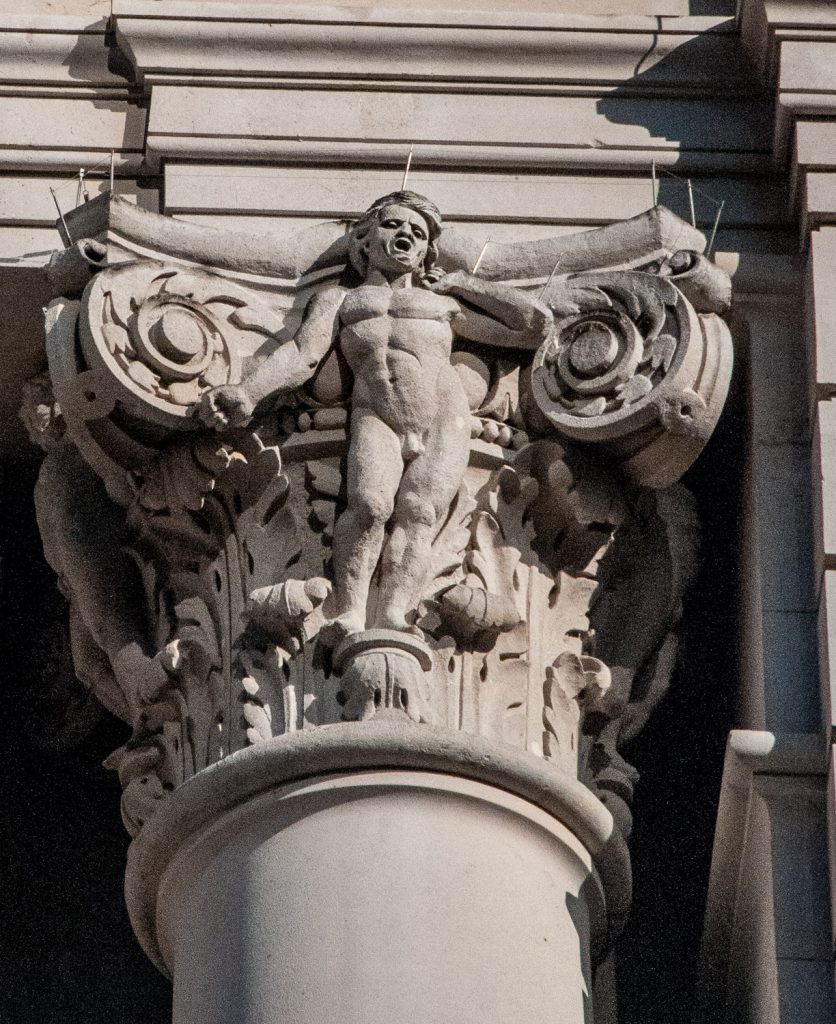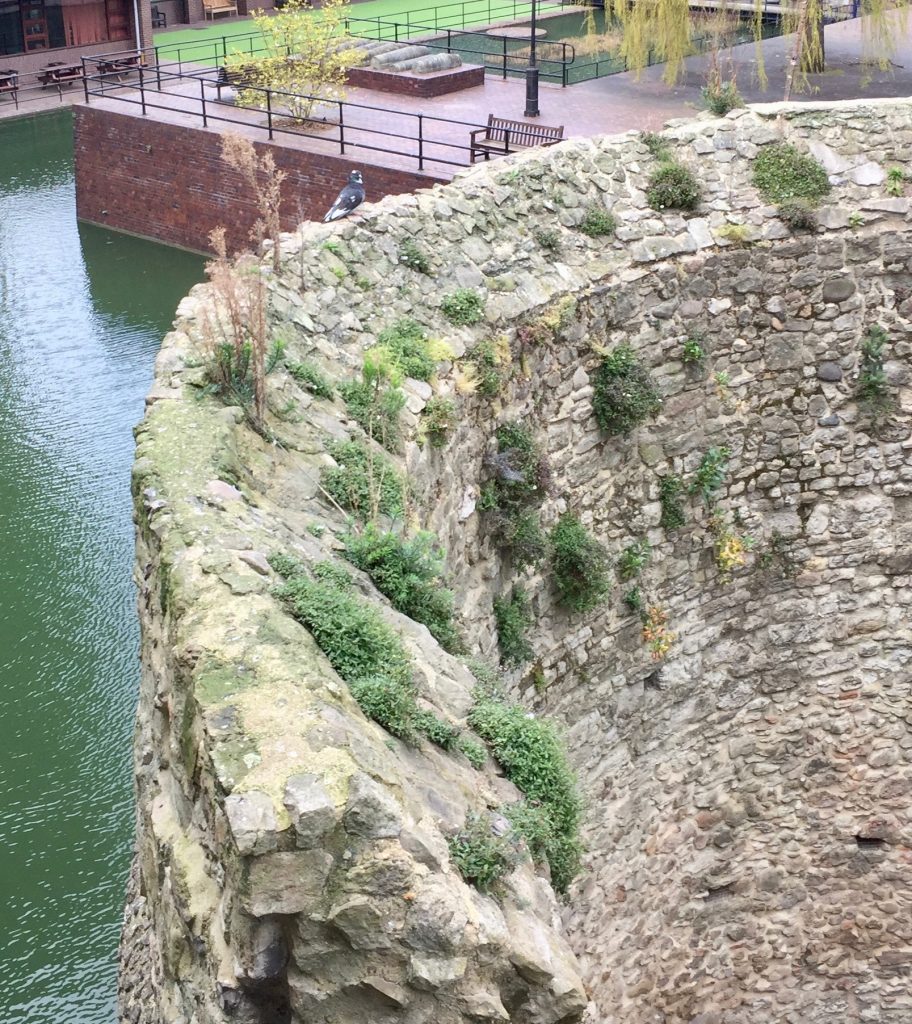Created between the 15th century and the more recent past, I have found a selection for us to admire and, in many cases, still walk through like thousands before us.
The oldest door I have discovered is the medieval chapel door in The Charterhouse. It was damaged by fire when the building was bombed during the Blitz (EC1M 6AN) …
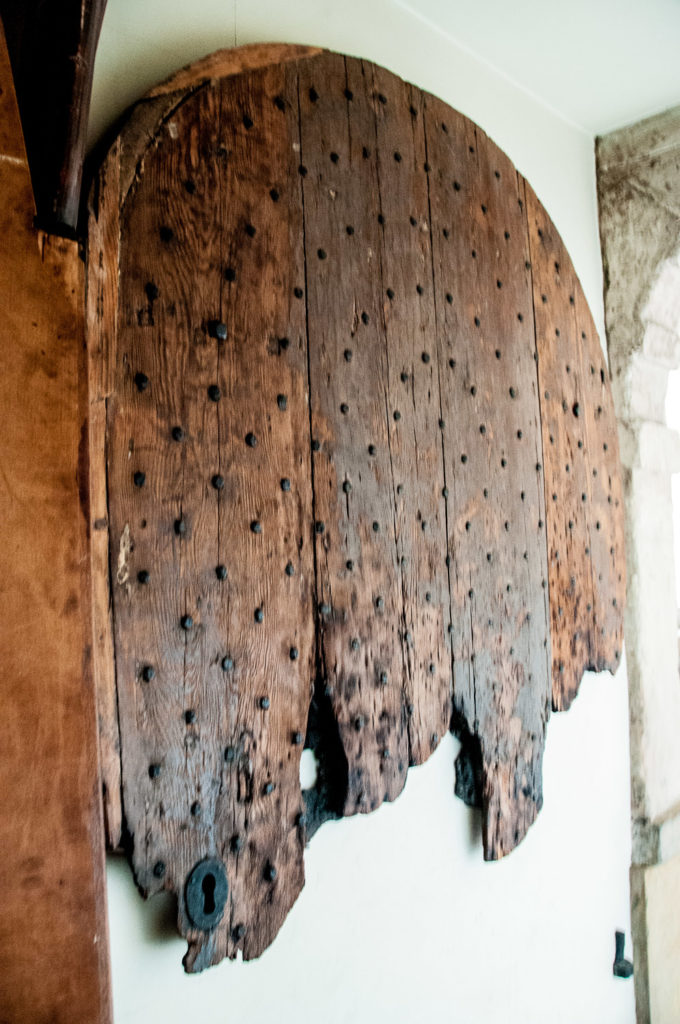
When you visit St Vedast-alias-Foster in Foster Lane you enter through early 17th century oak doors that have remarkably survived both the Great Fire of 1666 and the Blitz (EC2V 6HH) …
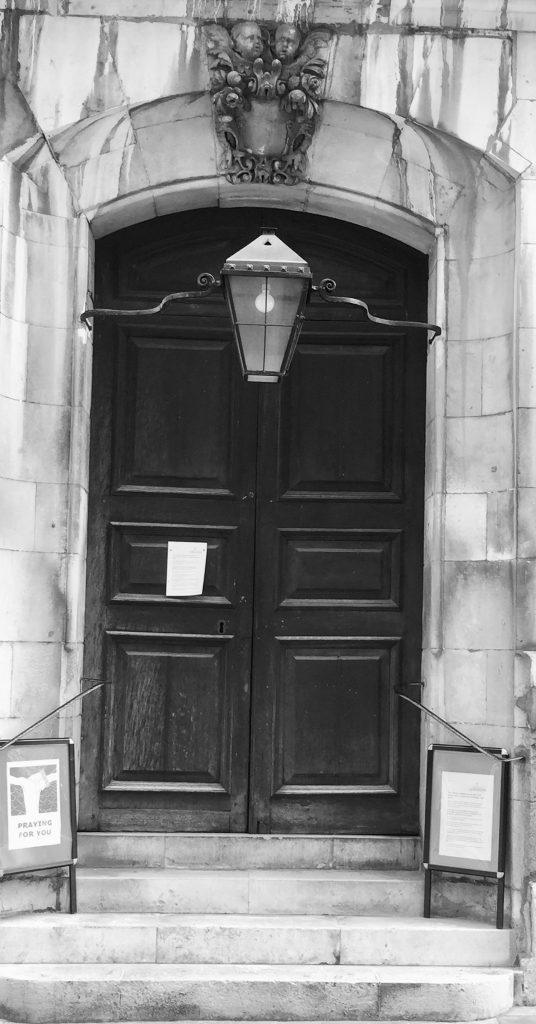
The cherubim carved on the keystone above the door are by one of Sir Christopher Wren’s favourite stonemasons, Edward Strong, and date from the 1690s. In total Strong was paid £3106:14:7 for his work on the church – he charged £5 for the cherubs.
On the south side of St Paul’s Cathedral is the Dean’s Door …
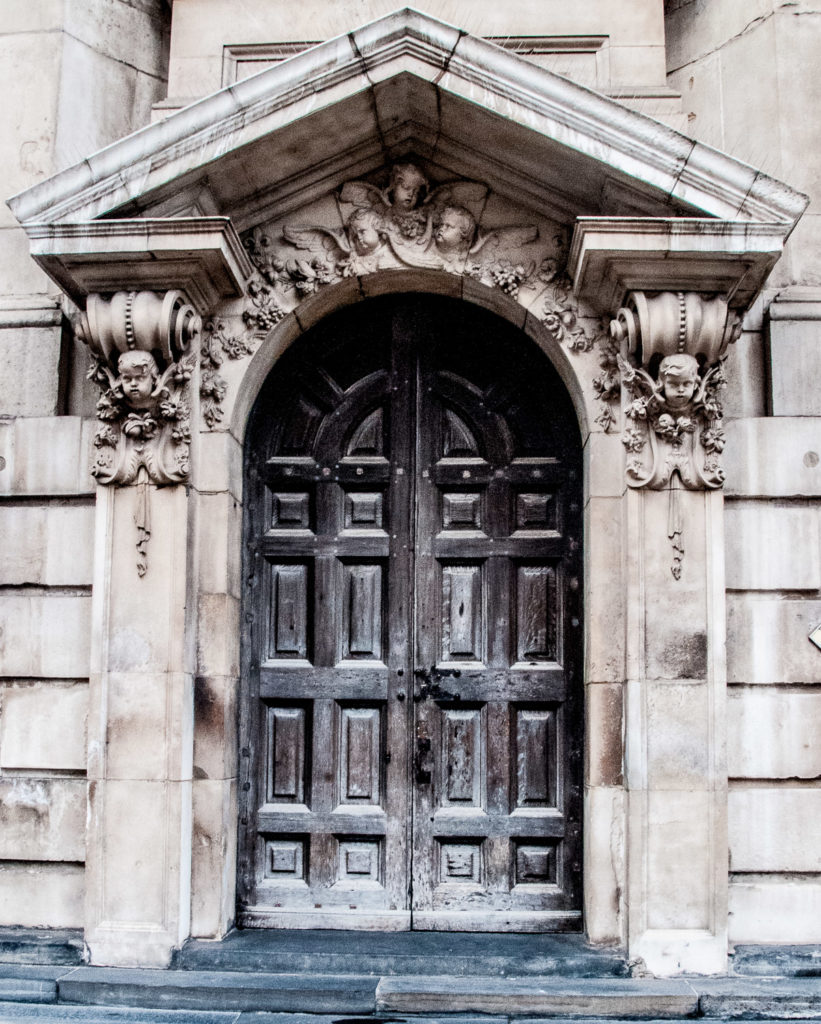
The carver was stonemason and architect Christopher Kempster (1627-1715), another of Wren’s favourite craftsmen. His work on the cherub’s heads and foliage was considered so good Wren awarded him an extra £20 for ‘the extraordinary diligence and care used in the said carving and his good performance of the same’. When Kempster died at the age of 88 his son carved a cherub’s head for his memorial.
Incidentally, £1 then was worth about £120 now.
The Cathedral’s main entrance, the 30 foot high Great West Door, is only opened on special occasions …
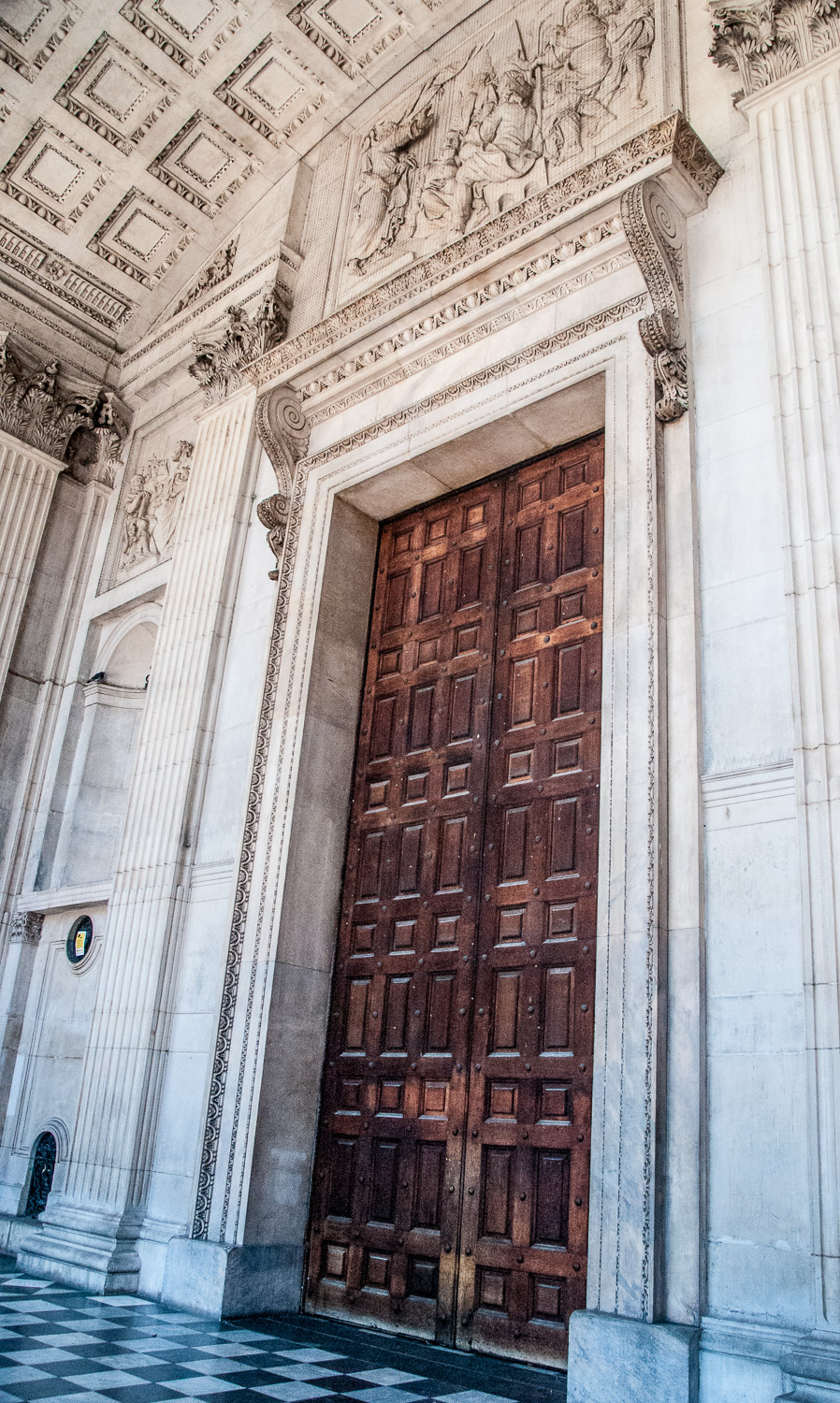
Look closely and you will see it is surrounded by 18th century graffiti, some in elegant cursive script …
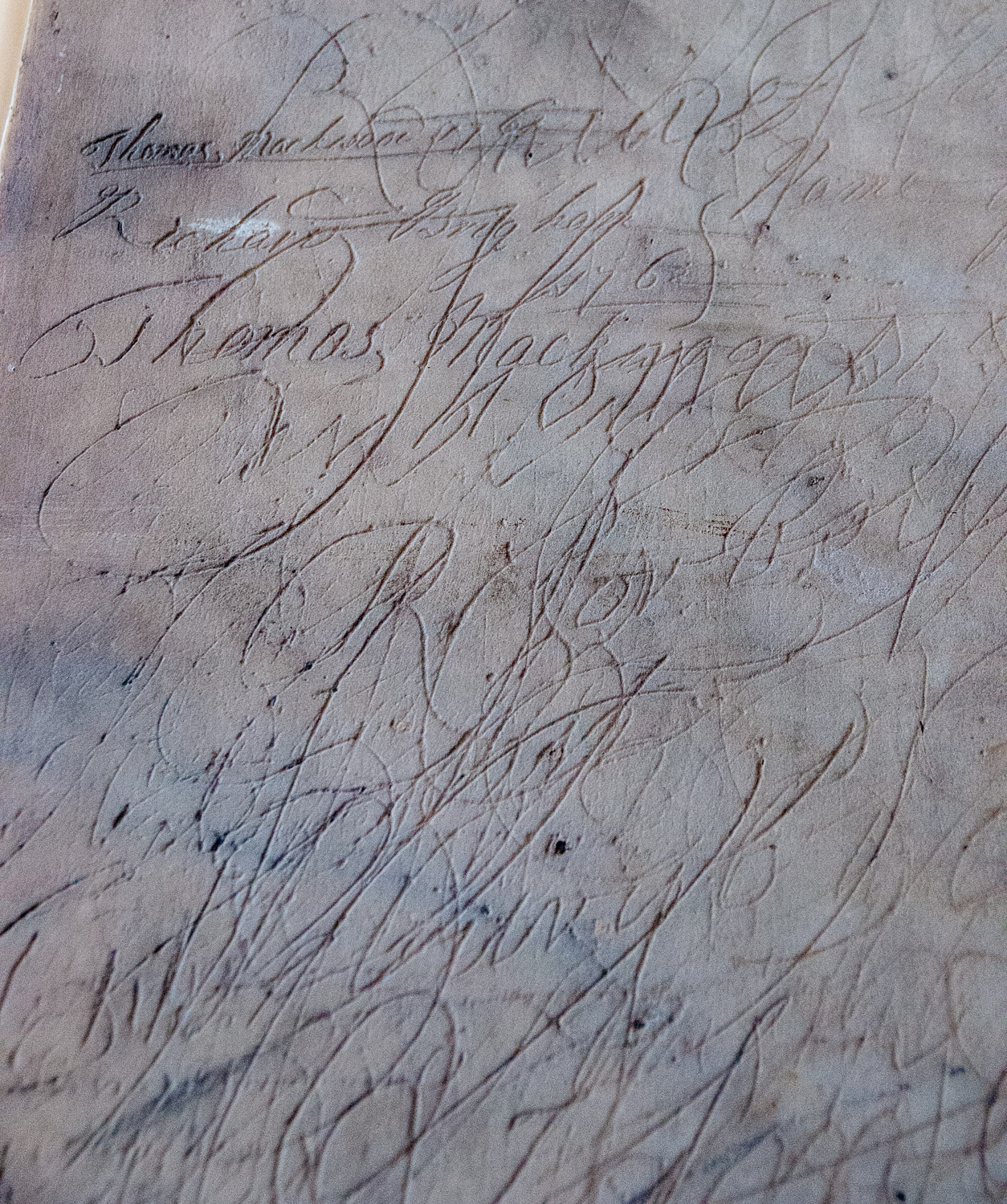
The facade St Martin’s House at 1 Gresham Street is a delight (EC4V 7BX) …
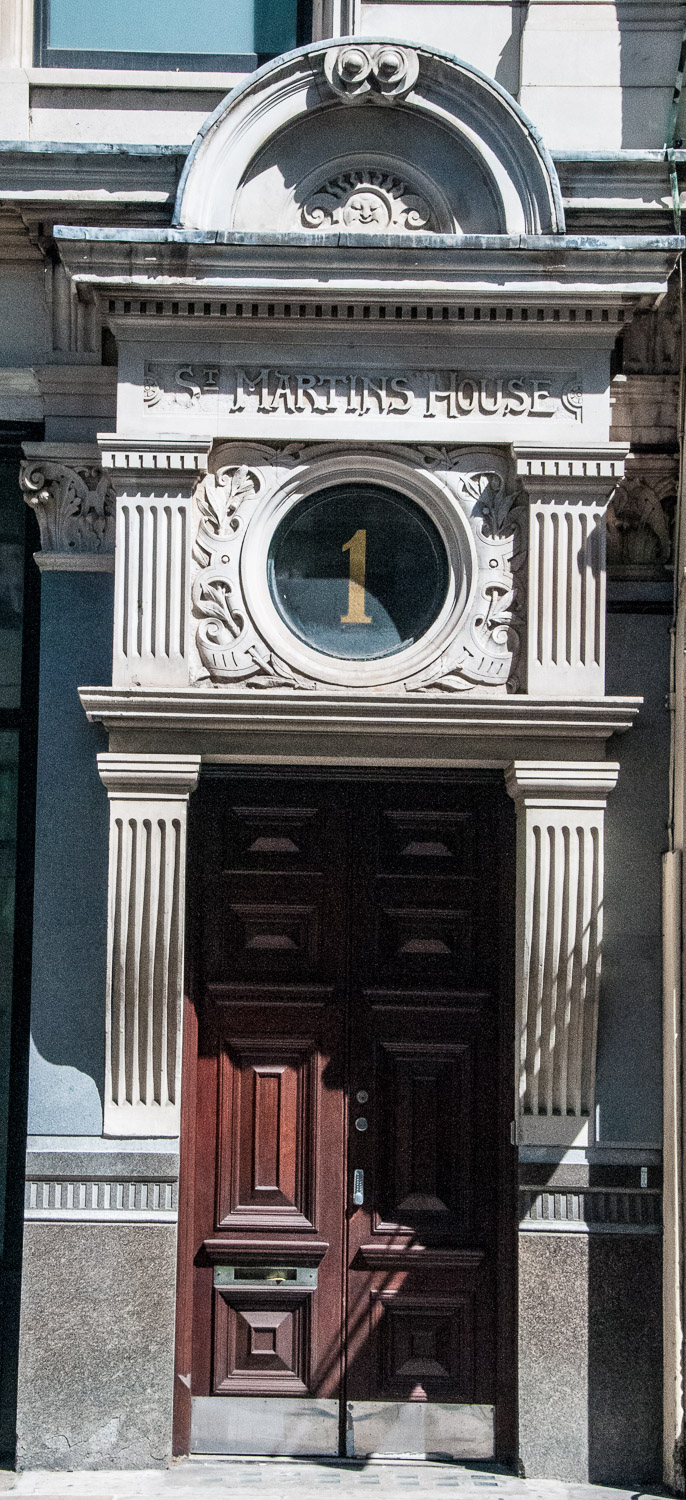
Dating from 1891 it incorporates a wonderfully happy, smiling Mr Sun …
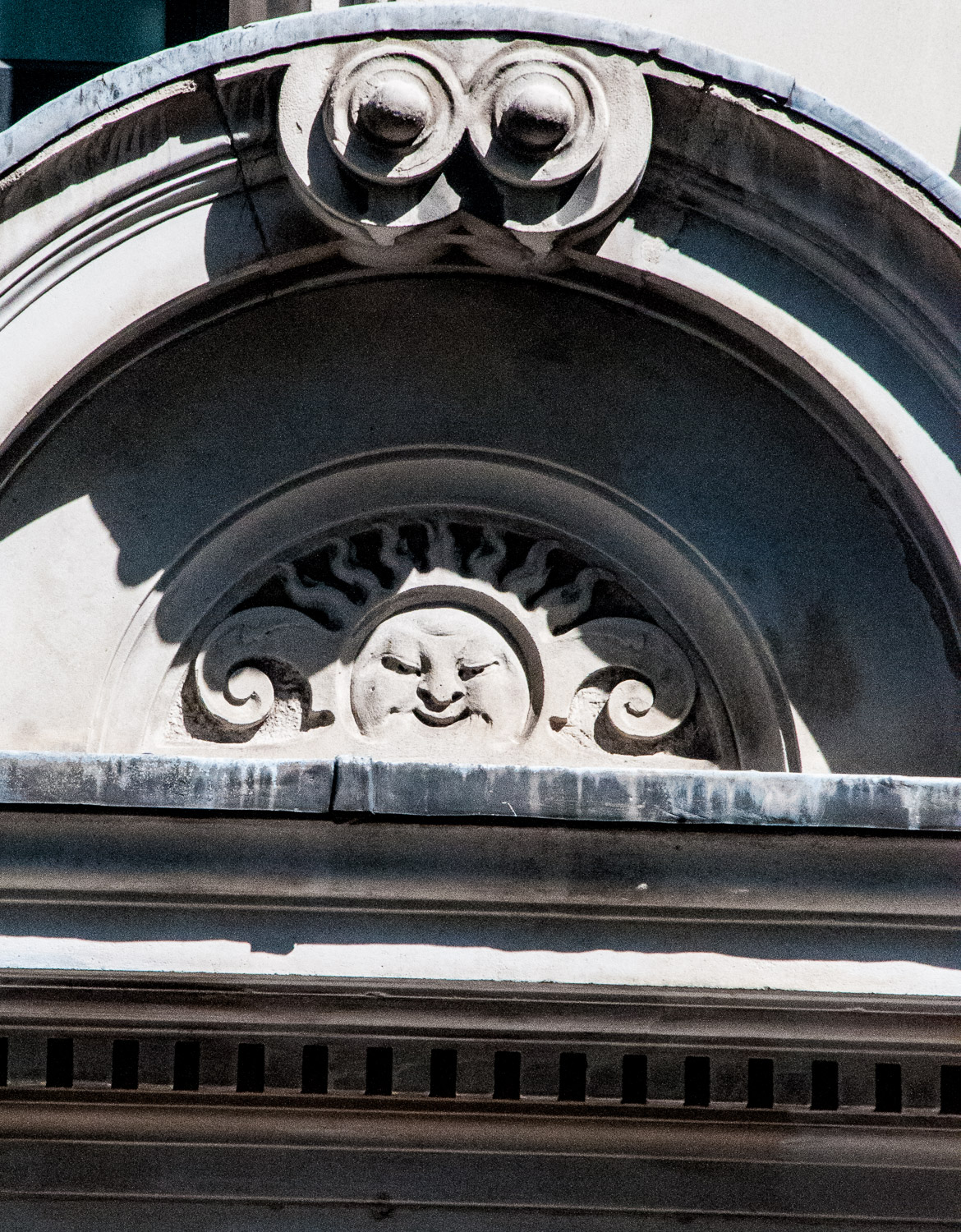
What also makes it charming is the rogue apostrophe ….
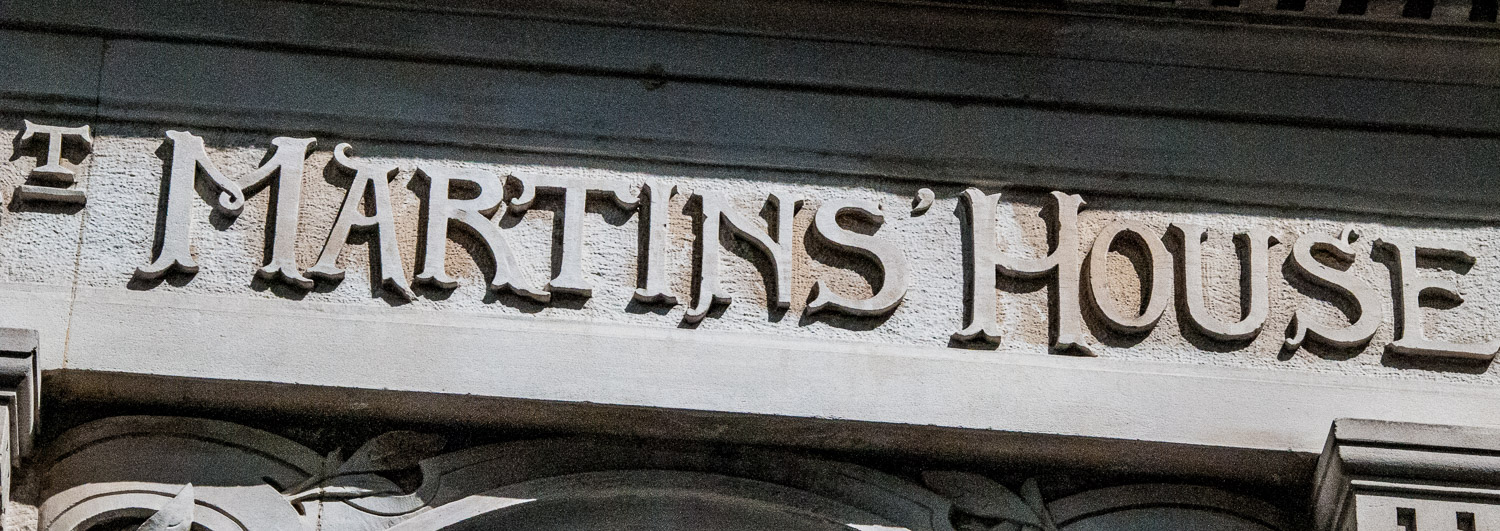
Surely it should read St Martin’s House?
What about this trio above what was once the entrance to the City Headquarters of the Royal Insurance Company at 24-28 Lombard Street (EC3V 9AJ) …
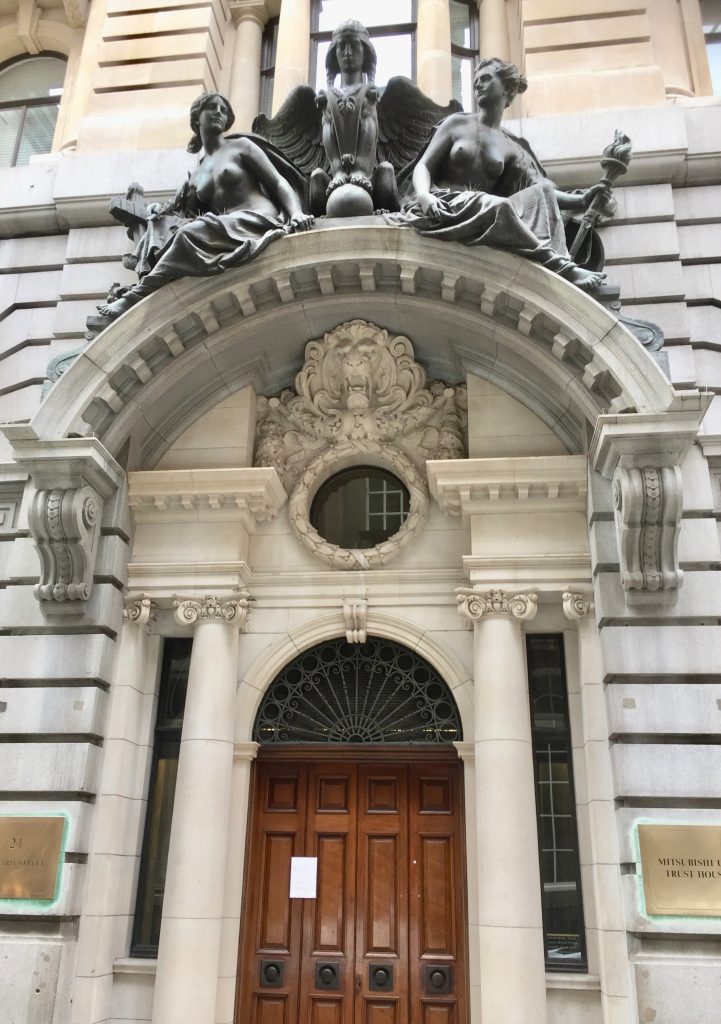
The historian Philip Ward-Jackson writes as follows:
‘The winged chimera at the centre of the group has the head of a woman and the legs of a lion. The two personifications are fine looking women, naked to the waist. The Sea holds a caduceus, and therefore also symbolises marine commerce … The attributes of Fire are a torch and bunches of faggots.
This quite sinister allegorical group must have been intended to intensify the fears of potential customers.’
The church of St Stephen Walbrook was constructed between 1672 and 1679 and is another Wren building (EC4N 8BN). The doors look original to me but I haven’t yet found out for sure …
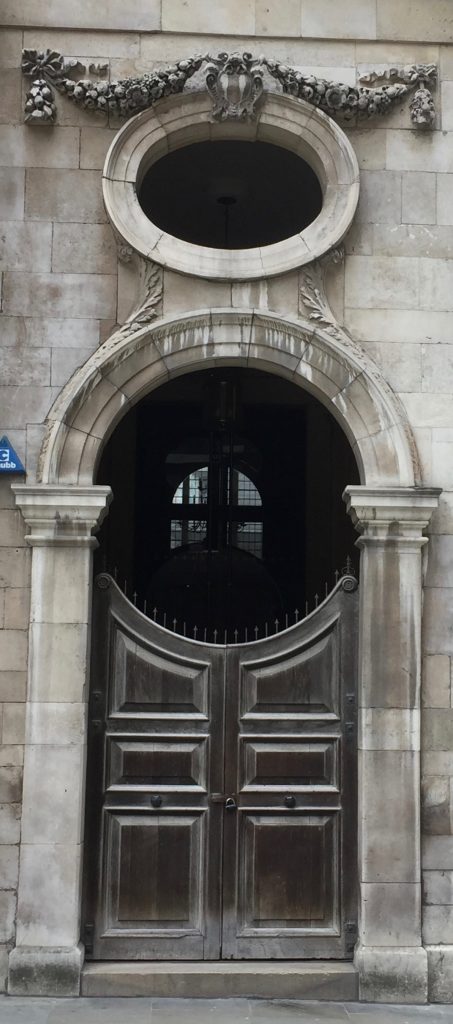
The building is where Dr Chad Varah founded the Samaritans and you can read more about that and the church itself here.
This impressive entrance is just around the corner from St Stephens. Push the doorbell and you never know, the Lord Mayor might answer the door …
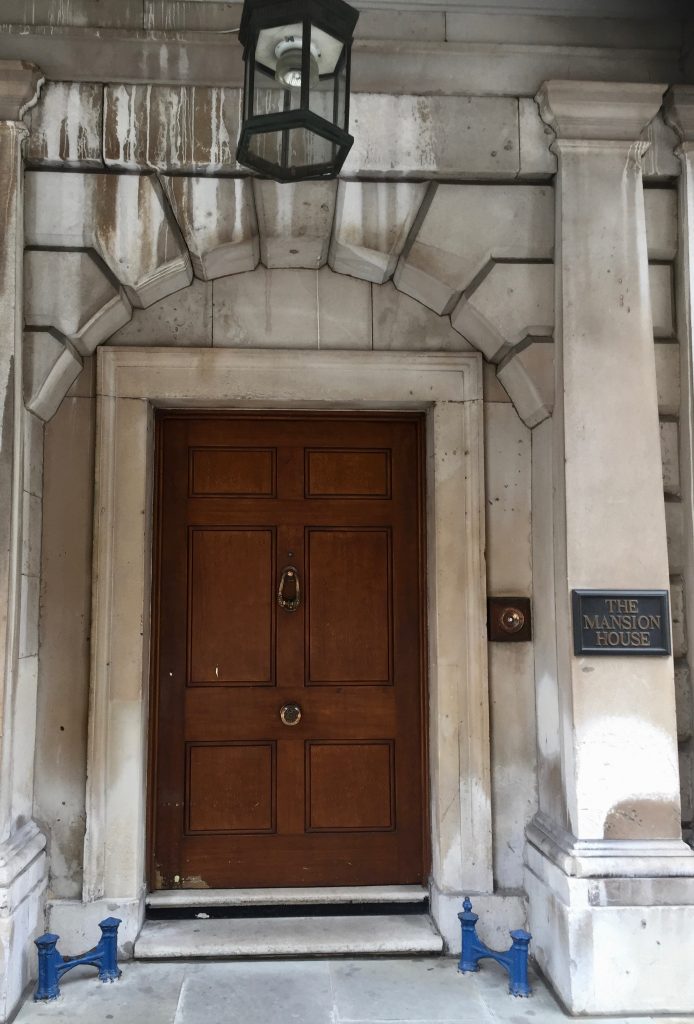
The virus shut down has meant that these magnificent doors at 2 Moorgate can now be seen easily during the week rather than just at the weekend (EC2R 6AG). Each door weighs a ton …
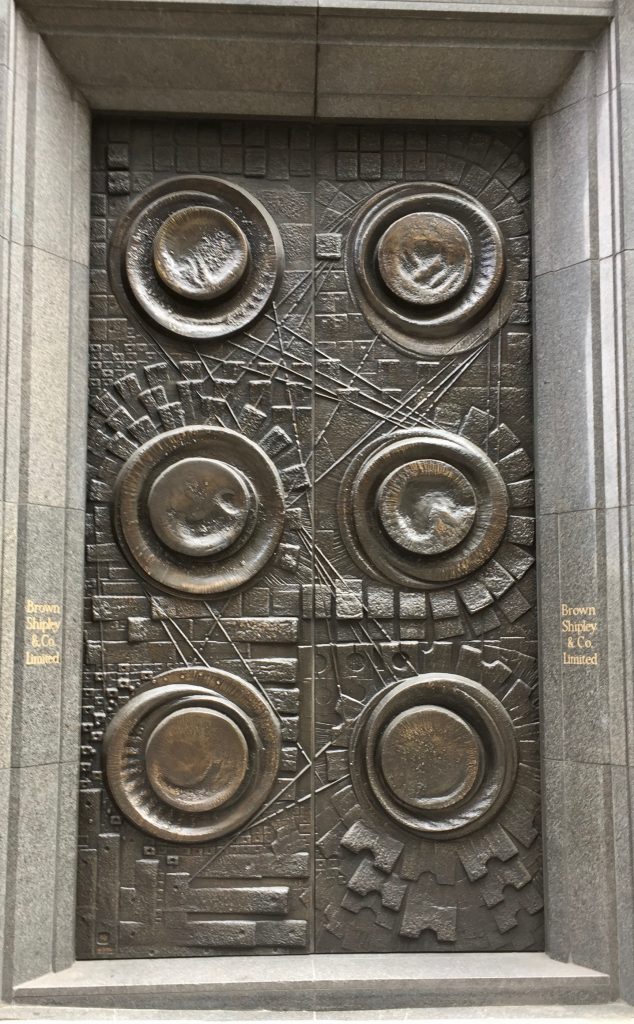
Suitably opulent for a private bank, they were designed by John Poole and date from 1975 when the building was opened by Edward Heath (who used to work for the company). Poole had a free hand with the design and said he intended to represent, in the circular forms, the firm’s centres of business. The linear patterns suggest communications between these centres along with ‘the interaction of spheres of influence’.
In 1888 the Institute of Chartered Accountants decided to treat themselves to a permanent headquarters and work was completed in 1893. Described by Sir Nikolaus Pevsner as ’eminently original and delightfully picturesque’, it is ‘a fine example of Victorian neo-Baroque which draws its inspiration from the work of the Italian Renaissance’. This is the formidable and imposing entrance at One Moorgate Place (EC2R 6EA) …
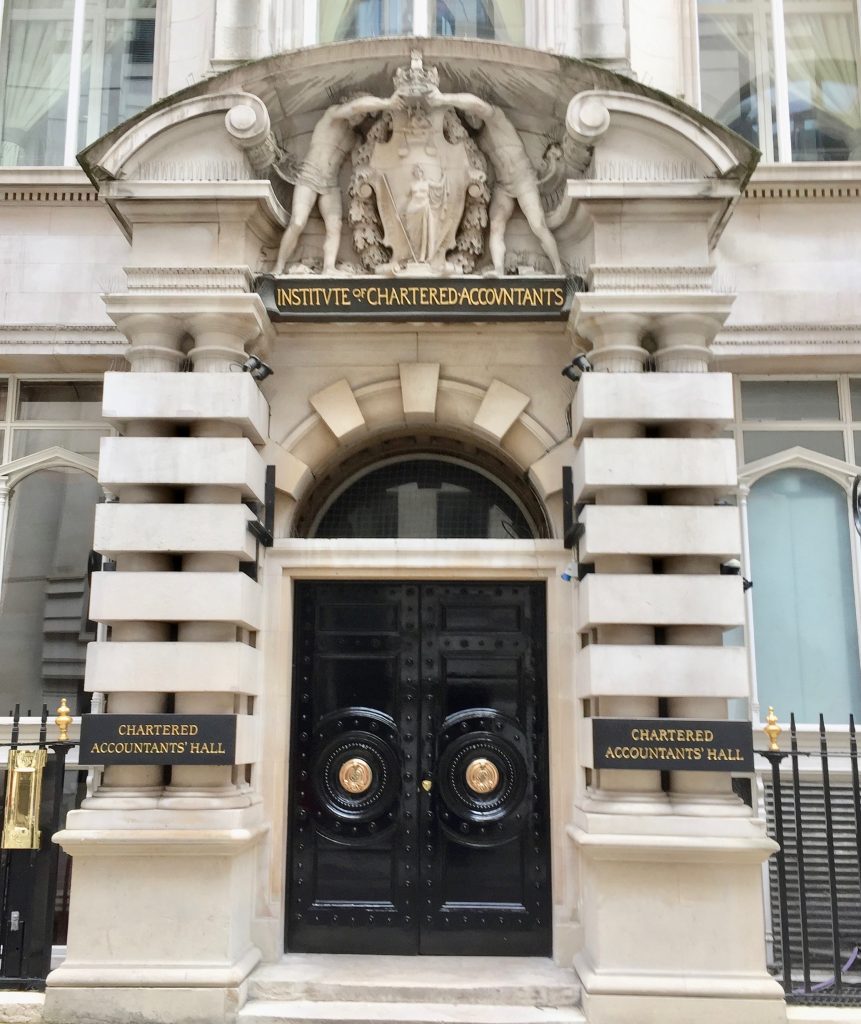
The large cartouche above the massive bronze doors depicts the Institute’s coat of arms and is held up by two classical male figures.
In the Museum of London you will find a door that must have struck terror into the hearts of the poor souls who were led through it …
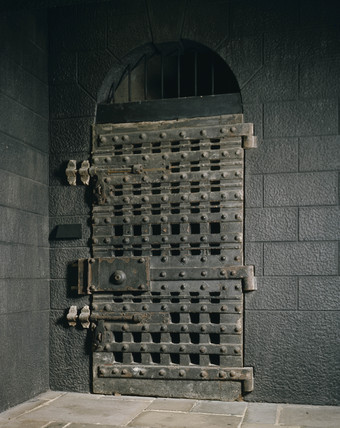
It comes from the now demolished Newgate Prison, dates from 1783, and was the one through which criminals were taken to their place of execution. In fact they walked through three doors of which this was the inner one – there was also an iron-cased half door and an outer one of solid iron. The final person to pass through it to his execution by hanging was the Fenian Michael Barrett on 27 May 1868 – the last public execution to take place in England.
Two doors that are a bit tucked away when open are here at 6 Holborn Viaduct (EC1A 2AE) …
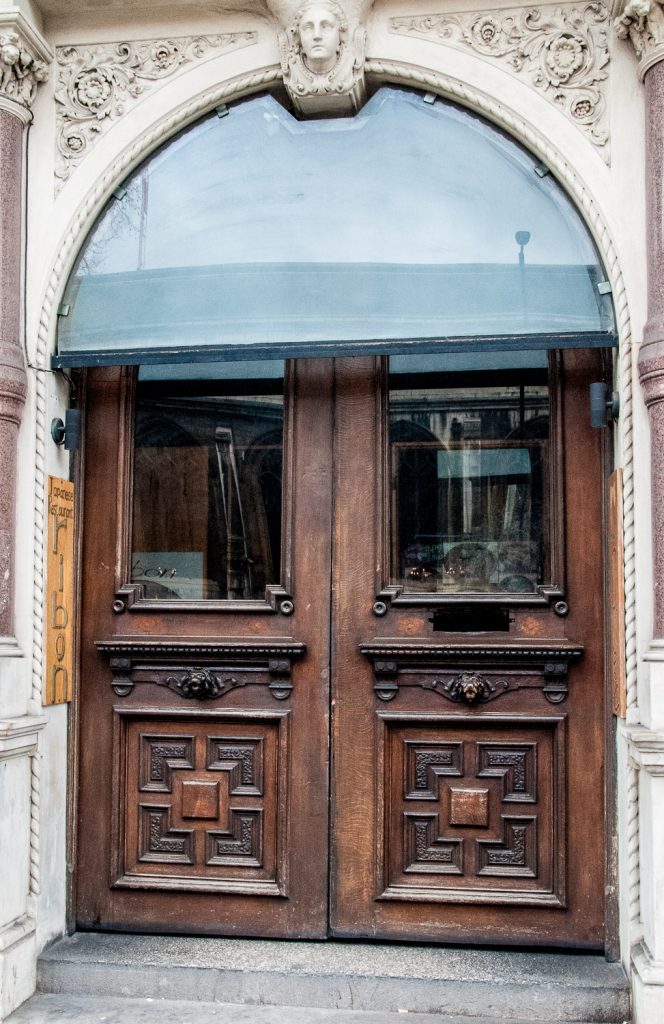
They have certainly suffered some brutal treatment over the years and look very unloved, but the lions heads have survived …
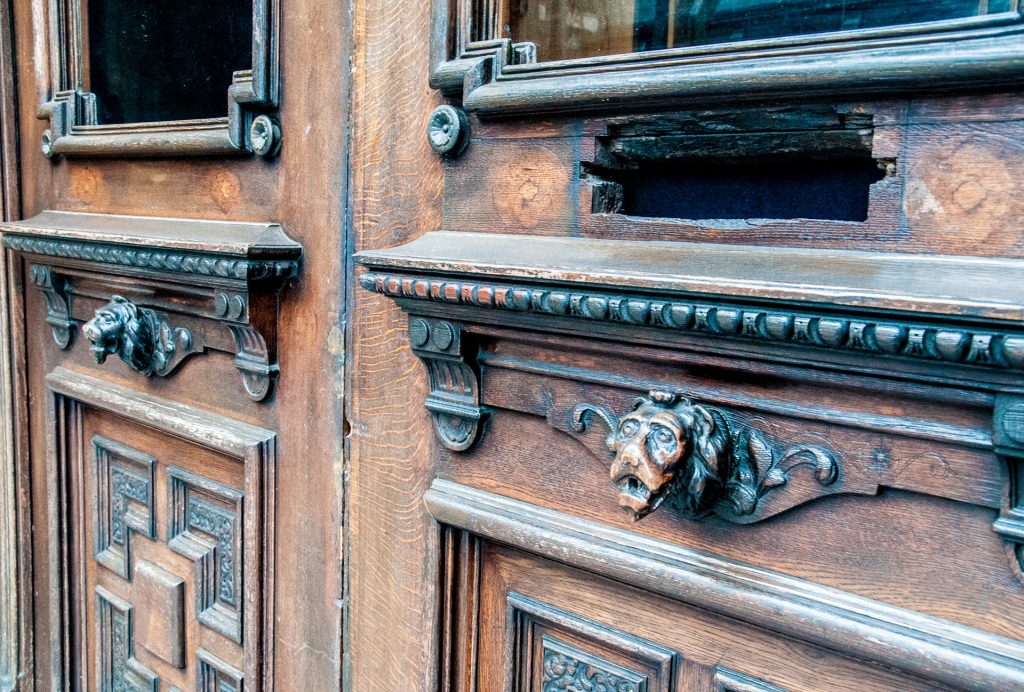
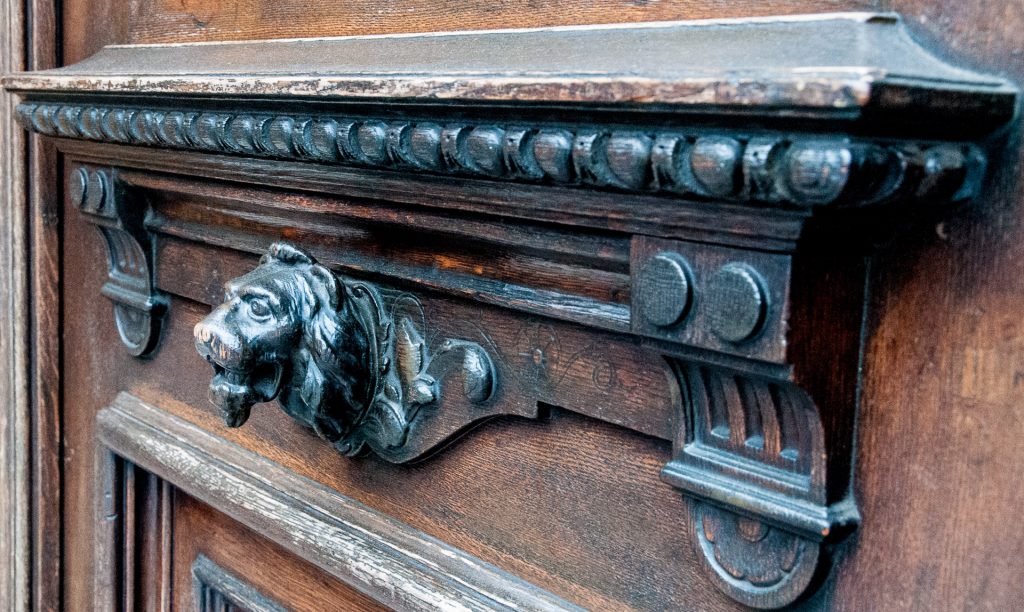
And finally, to finish on a more lighthearted note, just off Whitecross Street is this doorway which makes me smile every time I see it. The story I have conjured up in my mind is that, some time in the early 1970s, the people living there found that visitors knocked on the door rather than ringing the bell. When asked why, callers usually said that they didn’t know there was a bell. As a consequence, the residents (who obviously had artistic talents) got out their paint brushes and added this helpful sign to indicate where the push button bell was. Brilliant!
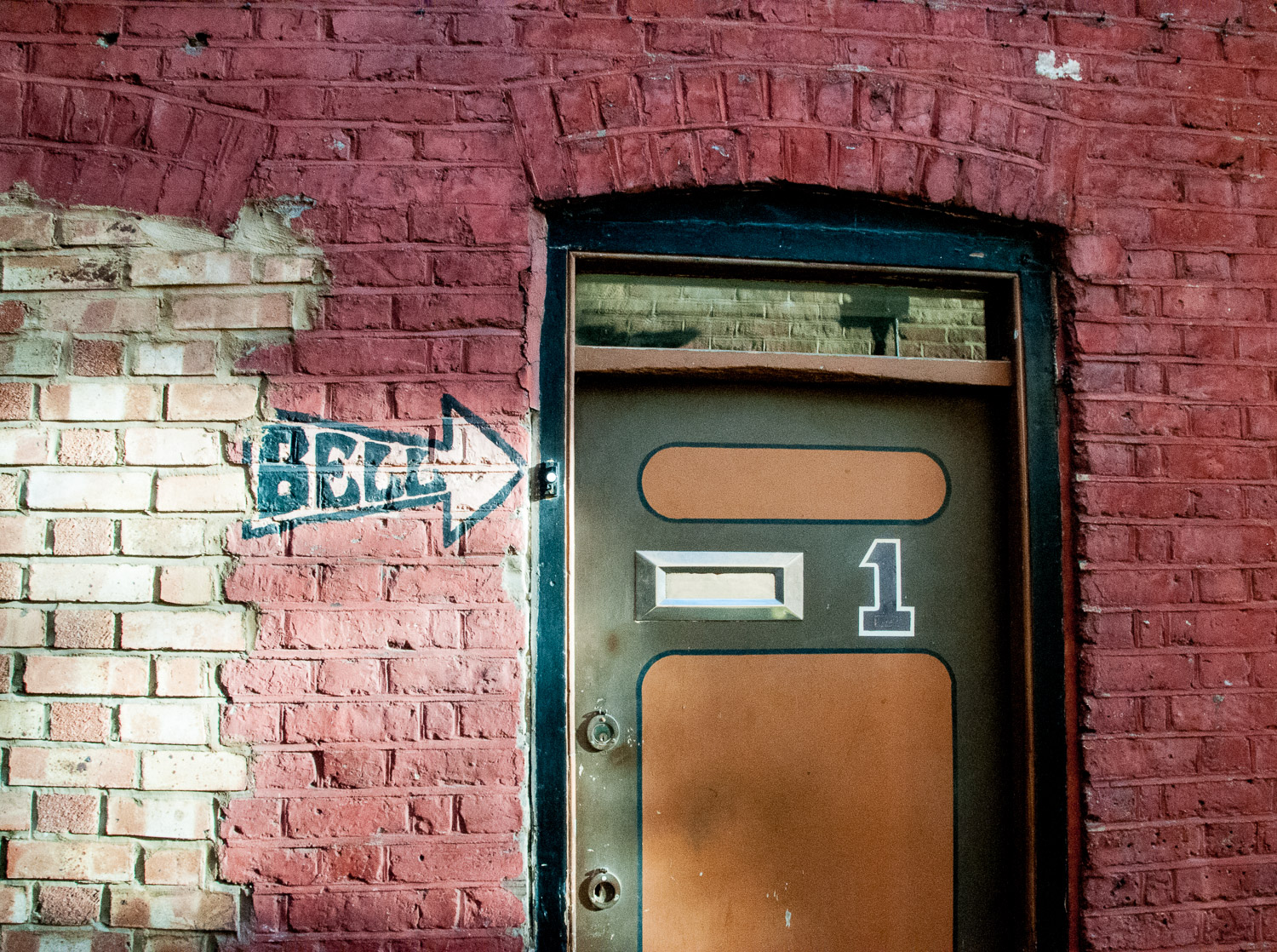
If, by any remote chance, doors, doorways and bells are your thing, do have a browse of the blogs I have written on these subjects : That Rings a Bell and City of London Doors and Doorways.
Remember you can follow me on Instagram :
